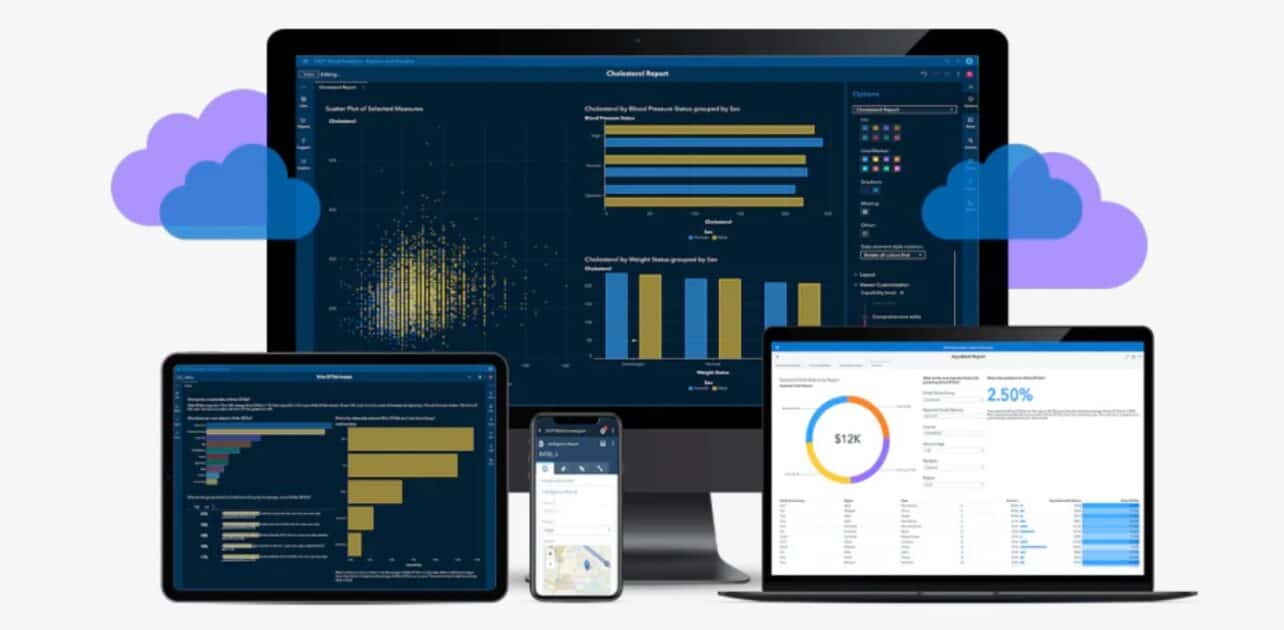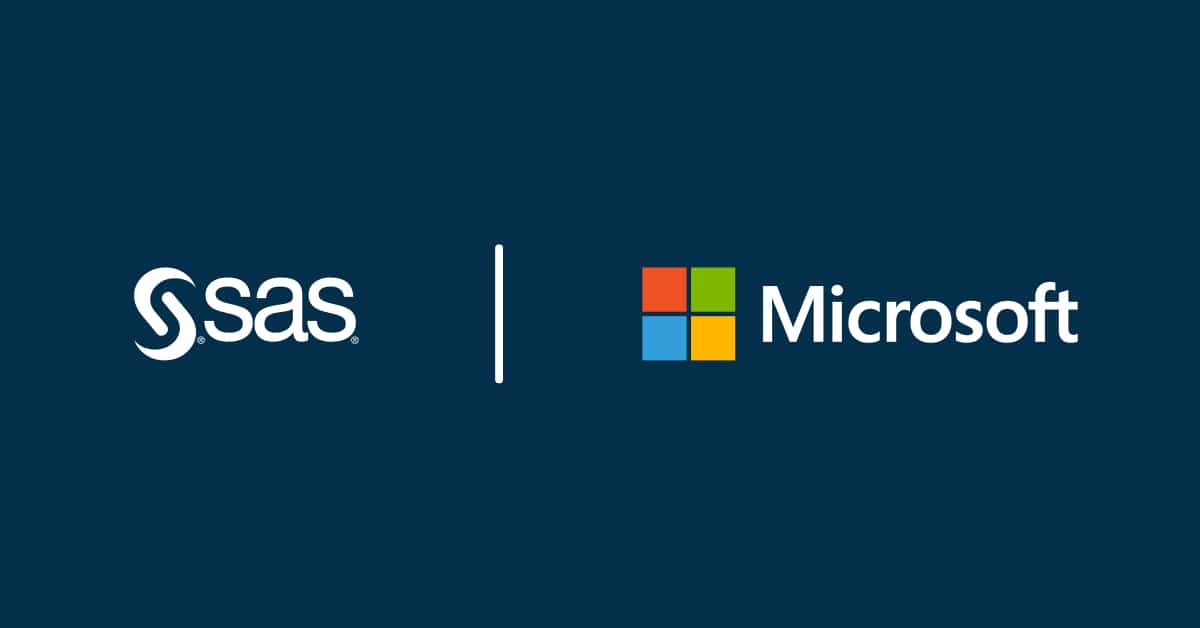SAS will discuss the future of analytics at its Global Forum in the coming days. The cloud plays an increasingly prominent role in this, according to the analytics giant. This is where real benefits can be realised, so SAS invests in this transition to the cloud. We spoke with the new CTO, Bryan Harris, to get an idea of the direction and vision.
Just before our conversation with Harris, SAS shares with us figures about big data and analytics in the public cloud. According to IDC, there will be tens of percent growth annually until 2024. On the other hand, the use of on-premise and other forms of deployment will decline by a few percent. Harris confirmed that he sees a variety of deployment options in practice: Many SAS users are on-premise but are also active in the cloud.
These different types of infrastructure are hugely important to organisations, as they may have different reasons for certain infrastructure choices. For example, a government agency may consciously choose to keep some data on-premise for compliance reasons. A bank may have agreements to use cloud infrastructure from a specific vendor for specific functionality. Despite preferences, however, the cloud is playing an increasingly important role. All industries seem to be investing more in the cloud.
Organisations that use SAS are therefore ready for the cloud. They want to run analytics on the infrastructure of their choice. To offer this freedom of choice, SAS has rapidly initiated integrations and collaborations with the most widely used cloud platforms. Kubernetes, Microsoft Azure, AWS, Google Cloud and Red Hat OpenShift are therefore hot topics during Global Forum.
Cloud-native requires investments
SAS’ cloud focus is part of the course it has been following for some time. SAS Viya is seen as a key asset within the strategy. This is the modern platform for analytics, AI and data management. SAS Viya is also fully cloud-based to meet today’s requirements. Cloud-based is not synonymous with only being available via public cloud; it means that it brings the benefits of cloud technology, both in the public cloud and in your own data centre. The benefits realised include improved performance, scalability and, in some cases, cost savings.

However, this road to cloud-native software has moved rapidly over the past year and a half, Harris says. Tens of thousands of lines of code had to be rewritten to build in all kinds of certainties. For example, SAS wants infrastructure to meet the desired performance benchmarks and interact correctly with cloud storage. “We also wanted to make sure that the cloud would be portable and not just lift-and-shift,” Harris explains. SAS wanted to build a solid bridge to the cloud, so to speak, companies could consistently move SAS software from on-premise infrastructure to the cloud. Harris emphasises that organisations should not be forced into the direction of analytics in the cloud, but if they want to, the migration must be as simple as possible.
Containers at the core
For the cloud push, it was inevitable that the software architecture would have to be thoroughly modified. SAS, therefore, made a conscious decision to containerise its analytics software. Designing and packaging the software this way makes it possible to run it in the user’s desired environment. Therefore, an analytics workload can be easily run in the user’s own data centre or the public cloud without being restricted by compatibility issues.
For deploying, scaling and managing the containers, SAS ultimately relies on Kubernetes. Harris explains that this container platform is the industry standard. “There are several choices you can make for Kubernetes, such as the ingress controller. At the bottom line, it provides us with very powerful orchestration. It assures us that our applications and containers always run according to standards. We get assurances on scalability, failover and availability.”
Harris says Kubernetes is the new kernel of cloud operating systems because of the central role within the IT landscape. All major cloud providers use Kubernetes and have distributions. It also makes the standardisation around containers and Kubernetes by SAS very logical, as this is the only way to enable analytics in the cloud.
As a follow-up question, we asked Harris to what extent the SAS community sees what Kubernetes and containers can mean for their work. According to him, not every data scientist will think of Kubernetes, but they will see the advantages as soon as they know what possibilities it offers. The container and Kubernetes approach can simplify interaction with SaaS solutions and APIs for data scientists, and they have fewer lifecycle management concerns. They can build models and services without having to deal with additional deployment issues.
Actively supporting hyperscalers
As a result of the new architecture, SAS now has integrations and partnerships with the three largest cloud providers: Microsoft Azure, AWS and Google Cloud. Of those three, Microsoft Azure has a special status. “It is the preferred cloud provider. We believe in the unique value we can offer customers together. To this end, our engineering teams work together so that analytics workloads can run faster in the cloud. Microsoft is developing a new compute and storage strategy to help us do this, ensuring speed,” Harris said. The CTO also points to joint product innovations between SAS and Microsoft. For example, solid integration with Microsoft Power Automate provides additional SAS data and analytics capabilities to expand the platform for building automation workflows. In addition, industry-specific SAS solutions are included in the Azure Marketplace.
Thanks to the Microsoft partnership, SAS has been able to offer the fully managed service SAS Cloud. “SAS Cloud runs exclusively on Azure and is ideal if you want fast analytics in the cloud. We take care of full management and ensure you are not burdened with operational tasks associated with the cloud,” Harris explains. As a result, SAS can guarantee many things, such as stringent data security requirements and adherence to compliance guidelines.
Although SAS really sees the added value of analytics on Azure, it wants to give its customers freedom of choice. Mathias Coopmans, who deals with architecture and the cloud at SAS, tells Techzine: “This expansion is important because customers want flexibility. Many companies have a multi-cloud strategy, but they may operate specifically in one cloud for containers or certain data. In that case, we must also show flexibility. By now offering SAS Viya in Azure, AWS and GCP, we cover the majority of the market within Europe.”
So if an organisation wants to use AWS or Google Cloud, the other two largest cloud vendors, there is technical support. During SAS Global Forum, SAS even announced new integrations for these two infrastructures. These concern the Amazon Elastic Kubernetes Service and Google Kubernetes Engine services. The integrations allow SAS to run on AWS and Google Cloud, respectively, as both services support running clusters on the cloud platforms. In addition to this integration, SAS can now handle Amazon RDS and Google Cloud SQL, the database services of the two cloud providers, so that analytics can take place closer to the data source.
Presence in regulated environments
With the possibilities around Azure, AWS and Google Cloud, analytics in the cloud is really possible. When asked, Harris does indicate that SAS continues to look for opportunities to expand support further. Later this year, for instance, new integration with Red Hat OpenShift is planned. This is an interesting upcoming innovation for SAS because it containerised its software using Red Hat and therefore has various security guarantees. But perhaps even more interesting in this area is that Red Hat OpenShift, like SAS, has a strong presence in highly regulated environments. Organisations with such environments often want additional security mechanisms when deploying containers and Kubernetes. In the coming months, SAS and Red Hat will look at how they can better serve joint customers. Since Red Hat OpenShift can just as easily run in your own data centre, this is a way of bringing the benefits of cloud technology into your own infrastructure.
Analytics in the cloud continues to grow
All in all, SAS has invested heavily in enabling analytics in the cloud. There is the future because of the performance gains and scalability. Ultimately, more and more companies are seeing the benefits, regardless of their industry. To better support these companies, SAS now works with the most widely used infrastructures. At the same time, Harris hints at further innovations so that the road to the cloud becomes ever easier and every organisation starts using modern analytics software.


